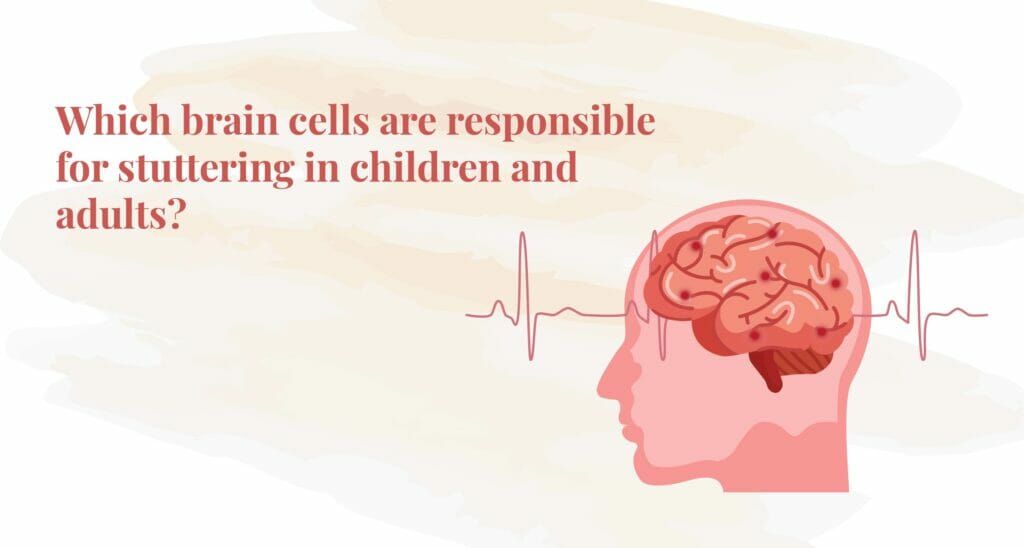For years researchers have been trying to find the neurological cause of stuttering. Experts have determined discrepancies in the neural circuits within the brain that control the processing and production of speech. New research from 2019 shows that loss of a particular type of cells – astrocytes from the brain is associated with stammering.
Stammering or stuttering is a lifelong speech fluency disorder. It typically begins in young children who have begun learning a language or two, at a rapid rate.
Stuttering in children is quite common and more than 70% of them recover on their own by the time they are 6 or 7 years old. However, 1 in 4 children continues to stutter throughout their life.
Even two decades ago, the cause of stuttering in some children was a mystery. The lack of evidence led several researchers to investigate neurological differences between the brains of those who stutter and those who don't. Brain imaging studies have been used for studying the differences in neural networks for quite a few years now. However, brain imaging studies are not enough to state if the difference in structures is the reason or result of stuttering.
What Are The First Genes Tied To Stuttering?
In 2010, researchers identified several mutations in the gene GNPTAB that seemed to be hereditary. The research published in the New England Journal of Medicine showed that the particular gene is responsible for the production of a protein that plays a role in the breakdown and recycling of cellular components inside the cell’s lysosome (think of it like a dump-yard filled with enzymes that can dissolve or destroy the cell’s junk).
GNPTAB works with a group of genes including the GNPTG and NAGPA to complete a signalling mechanism that guides the necessary enzymes to the lysosome of the cells. These three genes share a close relationship. The team found mutations in both GNPTG and NAGPA in people who stammer. Approximately 9% of those who stutter have mutations in any one of the three genes.
Which Brain Cells Are Responsible For Stuttering In Children and Adults?
According to the earlier studies led by Dr Drayna and colleagues, multiple gene mutations contribute to changes in the structure and function of the brain. These changes lead to one's predisposition to stuttering. The 2019 study used a mouse model with a mutation in the GNTAB gene.

According to the recent publication, Dr Drayna’s team at NIH NIDCD engineered a mice population with targeted mutations in the aforementioned gene and their observations found their way to the Proceedings of the National Academy of Sciences on 27 August 2019. This genetic approach has allowed researchers to decode the neuropathy of stuttering at a molecular level via the identification of the genetic mutations and at then at the cellular level by the identification of the specific cell-types associated with stuttering.
Here are the sets of observations from the most recent study conducted by Dr Drayna and his team –
- The researchers observed that the mice were normal in physiology and functioning. They were a healthy population, which further shows the viability of mouse models for studies such as these.
- The mice carrying the GNPTAB mutation vocalized with abnormally prolonged pauses. It is similar to the breaks and pauses those who stutter experience.
- The brain tissue from the mice carrying the mutated gene showed a significantly lower volume of astrocytes.
Note: What Are Astrocytes?
The astrocytes are star-shaped glial cells in the brain. They are also the most abundant and astrocytes play a critical role in the transmission of impulses inside the brain. Astrocytes are also critical support cells that provide the neurons with necessary nutrients for functioning and vitality. They also help in detoxification, guiding during migration and the regulation of metabolism. Thus the loss of astrocytes from the brain can have a multifaceted impact on the function of the brain.
What Role Do Astrocytes Play In Language Processing and Stuttering?
Dr Drayna’s team has shown that the loss of astrocytes is especially prominent in the corpus callosum of the mice carrying the GNPTAB mutation. The researchers used MRI to study the brain structure of the mice, which showed that the volume of the corpus callosum was significantly lesser in the mutated mice as compared to the control mice.
The corpus callosum is like a highway between the left and right hemispheres of the brain. Over 200 million nerve fibres comprise the corpus callosum that connects the two hemispheres. Apart from connecting the two sides, the main functions of the corpus callosum include complex problem-solving and coordination. It helps integrate signals that involve the right and left hemispheres, such as, language production.
It is understandable why the loss of volume of the corpus callosum or the loss of astrocytes that make up most of the corpus callosum may lead to stuttering like vocalization defects in the experimental mice population.
The curious minds of the researchers did not stop at this – they went ahead and conducted a set of follow-up experiments. They introduced the GNPTAB mutation into specific brain cell types of mice, one at a time. The mutation in brain cell types other than astrocytes did not correspond to similar vocalization defects that the team observed in the case of mutated astrocytes. The extended pause in vocalization.
How Many Mutated Genes Can A Person With Stutter Inherit?
Genes like GNPTAB and GNPTG have crucial roles to play in cell metabolism. Dominant mutations in both genes in an individual can lead to a complicated metabolic disease called mucolipidosis. Now, most people who stutter have only one copy of the mutated gene. Inheriting both copies of the mutation is the only way an individual can have mucolipidosis, which is a group of inherited metabolic disorders.
Which is quite different from the genetic makeup of those who stutter. Since they inherit only one defective copy of any one of the three genes – GNPTAB, GNPTG and NAGPA, they are physiologically healthy and psychologically competent. They don’t face metabolic challenges owing to mucolipidosis. The only manifestation of the mutation is stuttering since the protein corresponding to the mutated gene is still produced, but it’s not produced correctly.
Can Medication Make Up For Fewer Astrocytes and Reduce Stuttering?
Treatment with risperidone can increase the activity of the striatum and reduce stuttering in adults. According to published research by Dr. Gerald A. Maguire and his team, risperidone may act by increasing the activity of the star-shaped astrocytes in the brain’s striatum.
Risperidone is a common second-generation dopamine antagonist. For a long time, researchers have associated stuttering with an increase of dopamine in the brain. Risperidone works by blocking the dopamine receptors and preventing the uptake of the excess neurotransmitter.
Risperidone is also one of the few drugs that doesn’t pose a high risk of motor-system side effects like haloperidol.
Co-author SheikhBahaei states, “We don’t know exactly how risperidone interacts with the astrocytes to increase their activity.” However the study clearly proves that this compound boosts astrocyte activity in the Broca’s area and striatum.
As part of the experiment, the researchers conducted a randomized double-blind study with placebo control. 10 adults who stutter were part of this study. 5 of them received risperidone and the other 5 received a placebo.
After 6 weeks of taking risperidone or placebo every day, the 10 participants were assigned the task of reading aloud followed by a Positron Emission Tomography (PET) scan. The researchers broke the blind after the PET scans were complete.
Researchers also conducted PET scans of every participant before the medication began. These scans revealed no significant difference in the activity of specific regions of the brain involved in speech processing and production between the participants.
PET scans of the two groups showed that those who received risperidone exhibited higher glucose update in specific brain regions. Risperidone treatment may boost the metabolism in the left striatum (putamen and caudate nucleus) and the Broca’s area.
What’s The Future Of Stuttering Treatment?

This 2019 study by Dr Drayna et. al. is the first one that has identified the specific genetic mutations that may be the potential cause of stammering in children and in adults.
While some lysosomal disorders are currently being treated via the injection of the correctly manufactured enzyme into the individual’s blood. There might be hope in the future for those who stutter to receive a similar treatment.
Several labs across the world, including that of Dr. SheikhBahaei are designing and studying animal models to understand the different types of stuttering and their causes. Understanding these complex circuits involved in speaking can shed light on new treatment options with minimal side effects.
New compounds including second-generation dopamine blockers like risperidone may open new possibilities of stuttering treatment by addressing the cellular causes of stuttering.










